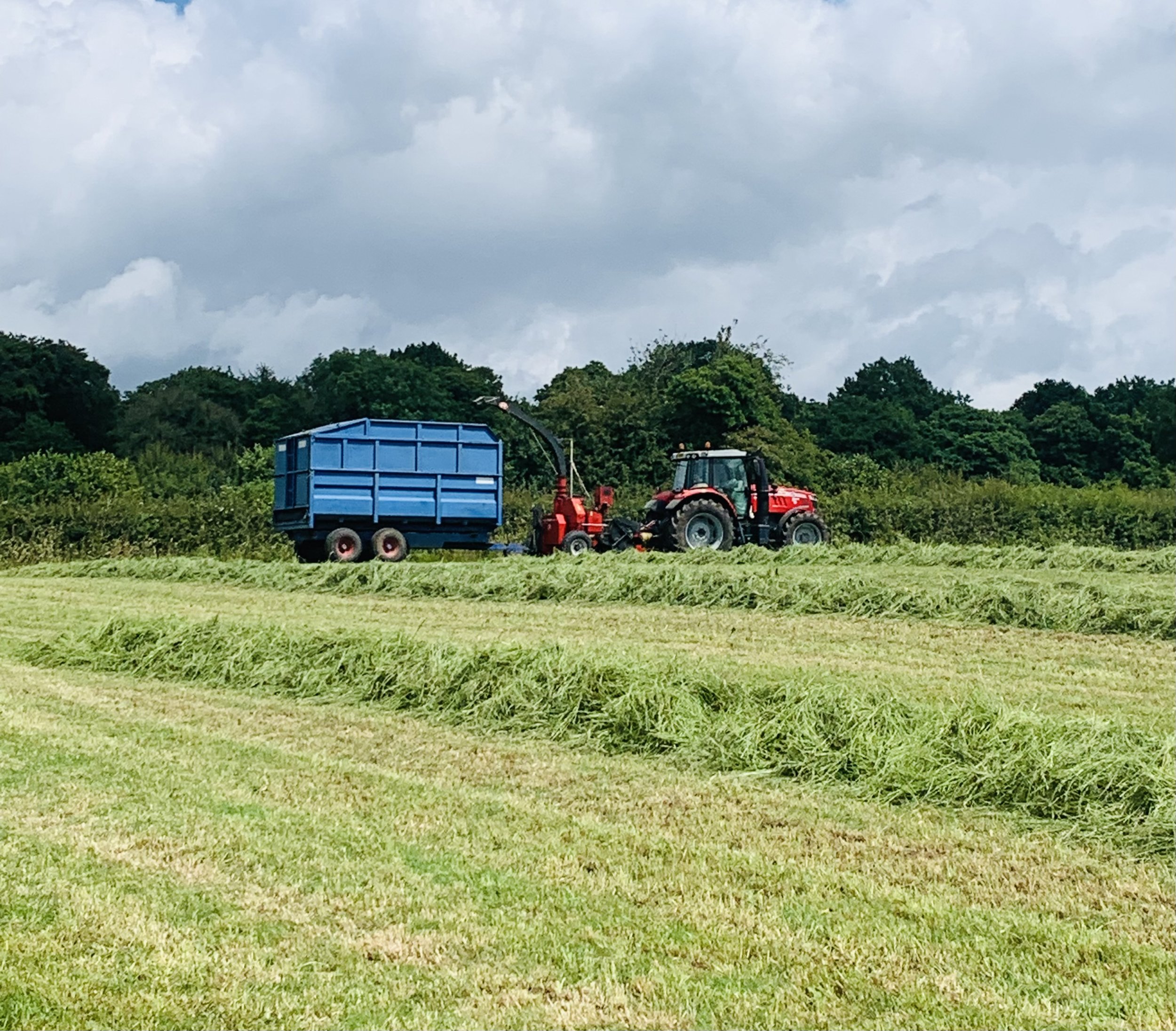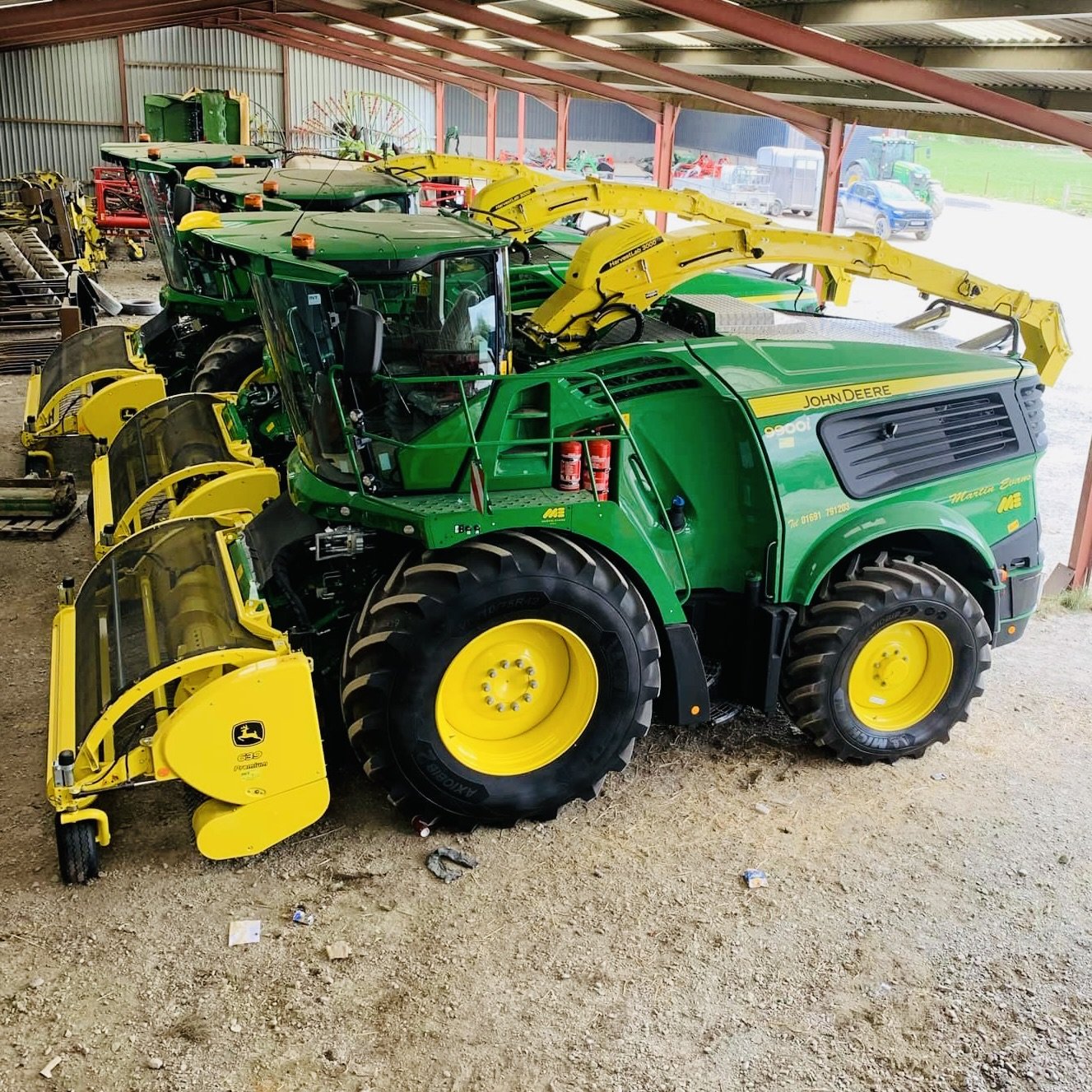Contractor vs DIY silage
When everything is going well, and the sun is shining, and the birds are singing, then there is nothing better than watching the contractors putting the final touches to a full clamp of silage. Or maybe there is? Maybe that feeling as you’re put the finishing touches to the clamp, perhaps that’s an even better feeling. Along with the knowledge that there isn’t a whopping bill that’s going to be on its way as soon as the buckrake is on his way!
Which is better, making your own silage or using a contractor?
There are pros and cons with any system and the decisions around silage making are no different. There are always those days when the world just seems to be against you, when the contractor doesn’t turn up when promised, or when your own kit lets you down. At those times it’s easy to make knee-jerk reactions and perhaps to make decisions that are not fully considered. So in the cold light of day what do you really need to consider?
Trailed forager and Elho Swather
Firstly you need to understand the key differences between the sort of silage you are making. For the sake of argument, we’re making silage in the ideal world here, and in an ideal world, clamp silage has different requirements to bale silage. Clamp silage is very similar to bagged silage just as round bale silage is similar to square bale silage, so we are really looking at two sets of requirements.
For clamp silage, the really critical part is speed, the speed of getting the stuff into the clamp and then the speed of excluding all the air and sealing it up. Bale silage is different because it is possible to seal it all up almost as soon as you have made the bales, with a baler/wrapper like a Fusion or with the wrapper following the baler. The kit needed to make great silage in these two situations is vastly different. It would be really easy to spend north of £2m on equipment to fill a clamp at speed without a single tractor on the shopping list!
So the decisions you take regarding contractors or DIY are going to be influenced by the silage system that suits you. The difference between a contractor who is clearing 250 acres a day and a farm based team who are struggling to clear 75 acres a day is significant. If this were on a baled silage system, then going more slowly just affects the D-Value of the crop and some possible variations in the weather conditions. With clamp silage, taking three and a half days to make your silage is going to cost you significant in-clamp losses, maybe in the range of 5-10% loss of feed value over and above a one day operation. So maybe the contractor doesn’t look so expensive anymore?
Is it cheaper to make your own silage?
Well it probably looks cheaper on the face of the thing, certainly if you already have some or all of the machinery to make your own silage. By being more expensive, you would hope it is better silage, because it’s all to do with the balance between quality and price. When making a purchase, it’s usual to expect a something extra if you are paying a bit more; like more performance or a more output. And it’s the same process when you are making an investment into a system, a more expensive solution has little appeal if it doesn’t give you some sort of additional return.
Farmer scale round baler from Krone
If you’re looking at costing these options, then you need to consider three elements for each; fixed costs, variable costs and quality of the product. Fixed costs being the kit, variable costs being the wrap or sheets etc, and quality being the actual feed value of the forage you place in front of the animals.
For baling the fixed costs of the machinery might look cheaper than a forage wagon or self propelled harvester. Then again if you use a contractor it’s cheaper still because you don’t have to buy any of the machinery. Obviously the variable costs will be much greater if you use a contractor as you have to pay for every acre you cut or every bale they wrap. So however you add it up, the fixed and the variable costs all end up contributing to the overall cost per tonne of your silage.
I often hear said that “we already have a baler so it’s not costing us anything” argument but I just don’t get it. If your baler has covered 5 timers more acreage than your neighbours because you bale silage and straw whilst they only bale the straw, then yours is worth a lot less money when you come to trade it in. It’s the same for tractors, the hours on the clock make a big influence on what the dealer decides as the trade-in value when you come to change it, so I don’t see any hours or acres as “free”. So be honest when you are trying to add up the cost making your own silage. Add in some reasonable depreciation figures at this stage to avoid an excessively disappointing discussion when it comes to swopping machinery in the future.
On time silage
Timeliness is another matter, and one where I can see some real benefits of using your own kit over employing a contractor to do the work for you. Phone promises of “tomorrow” from the contractor missing in action are of little use when it comes to making silage. The old saying should have been “make silage when the sun shines” because this has the biggest effect on the quality of the crop you ensile. By running your own kit, you are more likely to be able to get going when you need to.
On the other hand, it’s unlikely the contractor has to stop harvest to milk the cows, or assist a calving. They should therefore make the most of the weather - as long as they have turned up! This is really a case of output potential. A contractor should have more chance of achieving the potential output because they have less distraction pressures and the kit is more likely to be up to date and fully maintained. If not, then they probably won’t be contractors for very long!
Is your silage contractor reliable?
This is probably the point in essence - a good contractor, that turns up on time and doesn’t breakdown is going to offer you value. You get access to high output kit that’s operated by skilled hands. A good contractor should be making better silage and at a better price than you can do yourselves. But that’s the key bit - a GOOD contractor.
An impressive fleet belonging to Martin Evan Contractors
If you don’t have access to a good contractor, then all of this is pie in the sky. It is better to bale or chop your own silage at a less than optimal output than have some cowboys make your silage in the rain for you. In these situations, it might be worth investing in some slightly bigger kit and doing a bit of contracting for the other farmers in your area who are also facing this dilemma.
If you want to discuss who should be making your silage or would like to discuss any other aspects covered in this series, contact me at jeremy@silageconsultant.co.uk




